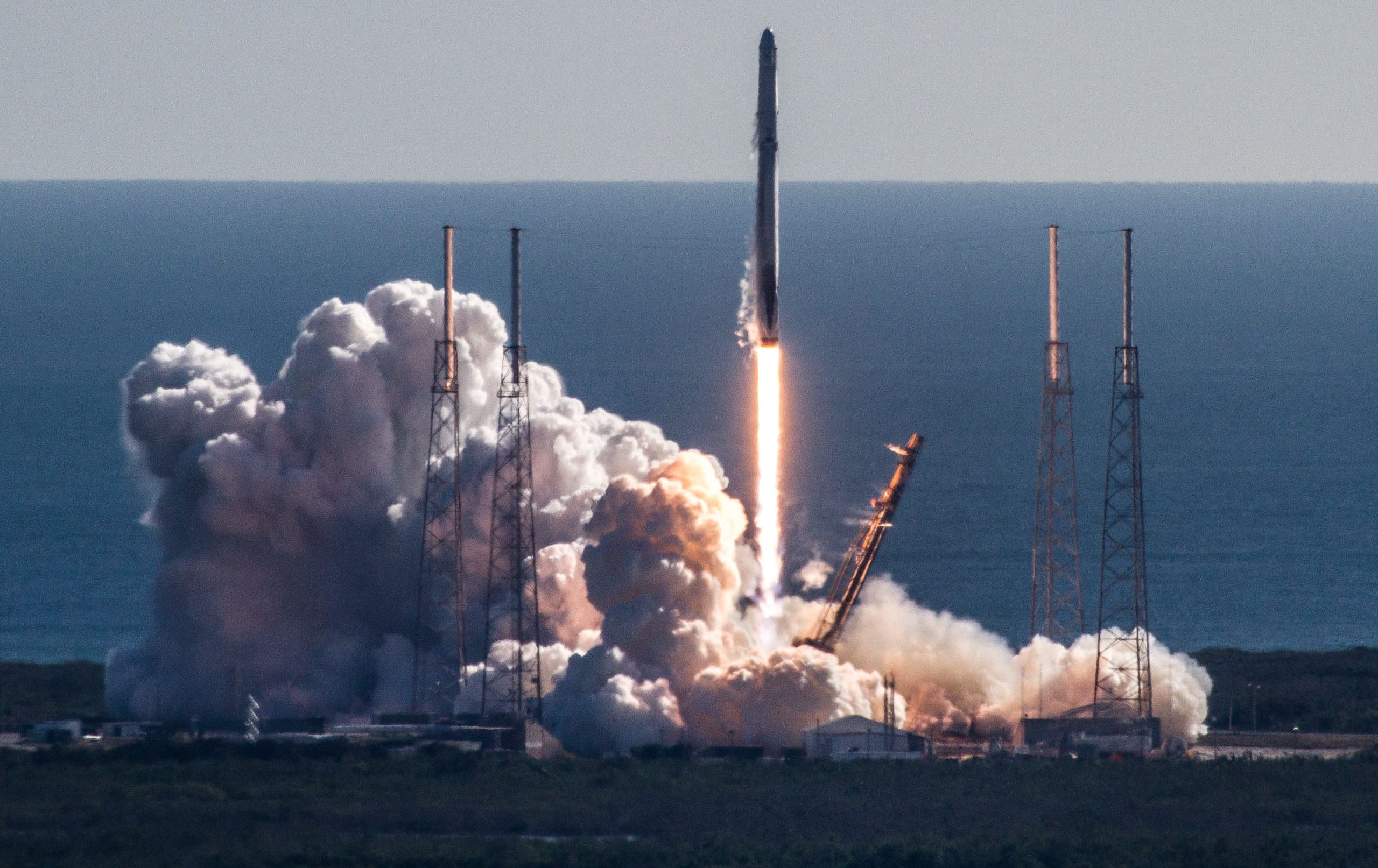
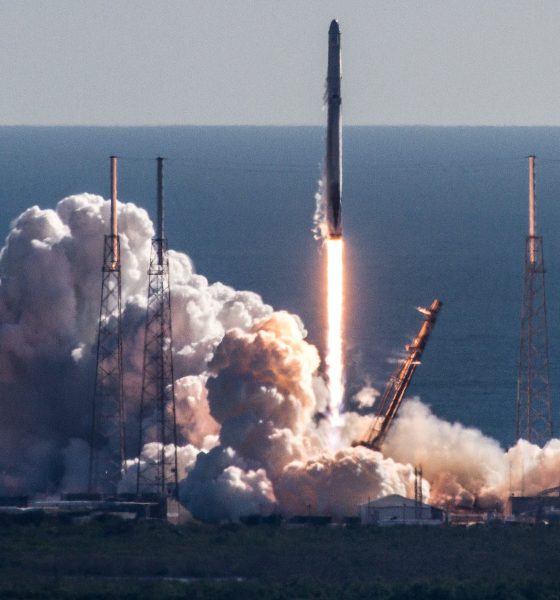
News
SpaceX ready for one more mission before Falcon Heavy’s maiden launch
Set to be the nightcap of relatively slow January for SpaceX, the rocket company is nearing the end of preparations for the launch of a communications satellite co-owned by SES and the government of Luxembourg, known as GovSat-1/SES-16. Scheduled to lift off no earlier than 4:25PM EST (2125 GMT) on Tuesday, January 30, the launch will continue SES’ tradition of flying aboard reused SpaceX rockets, with the ~4000 kg communication satellite expected to be carried into orbit by Falcon 9 B1032 (Booster #32), a booster that first flew during the May 2017 launch of the National Reconnaissance Office’s (NRO) classified NROL-76 spacecraft.

A panorama of LC-40 ahead of its return to flight, the CRS-13 Cargo Dragon mission. The same pad will host GovSat-1 in just over 24 hours. (Tom Cross/Teslarati)
Following an incredible six flight-proven Falcon 9 launches in 2017, the very first year SpaceX began flying reused rockets, GovSat-1 will mark the first of many, many additional flight-proven launches to come in 2018. Even before the inaugural flights of the purpose-built, highly reusable Block 5 of Falcon 9, currently slated for sometime in the next several months, SpaceX is expected to conduct a flurry of flight-proven launches as it wears down its stock of soon-to-be-outdated rockets of the Block 3 and 4 varieties. Educated estimates place the number of reused launches at around five between February and April 2018, six if Falcon Heavy is included (both side boosters are flight-proven). A minimum of six more reused Falcon 9s are then expected to fly between May and the end of 2018, and this almost certainly does not account for the imminent introduction of Block 5.
It is reasonable to assume that the first successful flights of Falcon 9 Block 5 and first several manufactured cores will be followed only months later by a phase change towards reusability. This shift will likely see SpaceX move to a mode of operations that strongly encourages and subsidizes reused boosters as the default option for customers, with flights aboard new cores a comparatively rare alternative reserved only for unique holdouts like NASA, the USAF, and NRO.
2 Falcons on 2 Pads launching by @SpaceX in next 2 weeks 1st time-#FalconHeavy at #pad39A (l) & #Falcon9 #SES16 #GovSat1 at pad #SLC40 (r) post Jan 26 static fire test at @CapeCanaveralFL AFS. Credit: @ken_kremer https://t.co/5g37NsRw85 #SpaceUpClose pic.twitter.com/Lnoh3sCWUB
— Ken Kremer🇺🇦🇩🇪🇺🇸🚀🧪 (@ken_kremer) January 27, 2018
Somewhat sadly, the inherent engineering limits of older versions of Falcon 9 and the imminent introduction of Block 5 mean that SpaceX has less and less of a need to recover flight proven boosters that have no hope of being cost-effectively refurbished and conducting additional flights. This attitude was highlighted with the fourth launch of ten Iridium NEXT satellites in late December 2017, which saw a flight-proven Falcon 9 conduct a controlled ocean ditch after separating from the second stage. While crew aboard at least one of SpaceX’s fleet of recovery vessels were tasked with attempting to recover any accessible floating debris after the first stage ditched into the ocean, it was very much intentionally expended, and SpaceX’s West coast drone ship never left port. GovSat-1 will see this intentional practice of expending recoverable boosters continue – Falcon 9 B1032 is also expected to ditch into the ocean, with no recovery attempt being made aboard the drone ship Of Course I Still Love You.
Nevertheless, SpaceX-leased recovery vessels GO Quest and GO Searcher were both seen leaving Port Canaveral, Florida yesterday, presumably in order to attempt the recovery of either floating debris from the first stage and/or the rocket’s payload fairing, a milestone that SpaceX is still striving to reach.
L-1 day #Falcon9 launch weather forecast. Forecast is unchanged from yesterday. A 40% chance of acceptable conditions in the 2hr launch window tomorrow with the primary concern being winds. #SpaceX #SES #SES16 #GovSat1 pic.twitter.com/PoUx9V0qK7
— Chris G (@ChrisG_SpX) January 29, 2018
Follow along live as launch photographer Tom Cross and I cover these exciting proceedings as close to live as possible. Tom will be heading to Cape Canaveral Air Force Station early tomorrow morning in order to set up his remote cameras to capture yet another beautiful SpaceX launch.
Teslarati – Instagram – Twitter
Tom Cross – Instagram
Eric Ralph – Twitter

News
Tesla is improving Giga Berlin’s free “Giga Train” service for employees
With this initiative, Tesla aims to boost the number of Gigafactory Berlin employees commuting by rail while keeping the shuttle free for all riders.

Tesla will expand its factory shuttle service in Germany beginning January 4, adding direct rail trips from Berlin Ostbahnhof to Giga Berlin-Brandenburg in Grünheide.
With this initiative, Tesla aims to boost the number of Gigafactory Berlin employees commuting by rail while keeping the shuttle free for all riders.
New shuttle route
As noted in a report from rbb24, the updated service, which will start January 4, will run between the Berlin Ostbahnhof East Station and the Erkner Station at the Gigafactory Berlin complex. Tesla stated that the timetable mirrors shift changes for the facility’s employees, and similar to before, the service will be completely free. The train will offer six direct trips per day as well.
“The service includes six daily trips, which also cover our shift times. The trains will run between Berlin Ostbahnhof (with a stop at Ostkreuz) and Erkner station to the Gigafactory,” Tesla Germany stated.
Even with construction continuing at Fangschleuse and Köpenick stations, the company said the route has been optimized to maintain a predictable 35-minute travel time. The update follows earlier phases of Tesla’s “Giga Train” program, which initially connected Erkner to the factory grounds before expanding to Berlin-Lichtenberg.
Tesla pushes for majority rail commuting
Tesla began production at Grünheide in March 2022, and the factory’s workforce has since grown to around 11,500 employees, with an estimated 60% commuting from Berlin. The facility produces the Model Y, Tesla’s best-selling vehicle, for both Germany and other territories.
The company has repeatedly emphasized its goal of having more than half its staff use public transportation rather than cars, positioning the shuttle as a key part of that initiative. In keeping with the factory’s sustainability focus, Tesla continues to allow even non-employees to ride the shuttle free of charge, making it a broader mobility option for the area.
News
Tesla Model 3 and Model Y dominate China’s real-world efficiency tests
The Tesla Model 3 posted 20.8 kWh/100 km while the Model Y followed closely at 21.8 kWh/100 km.
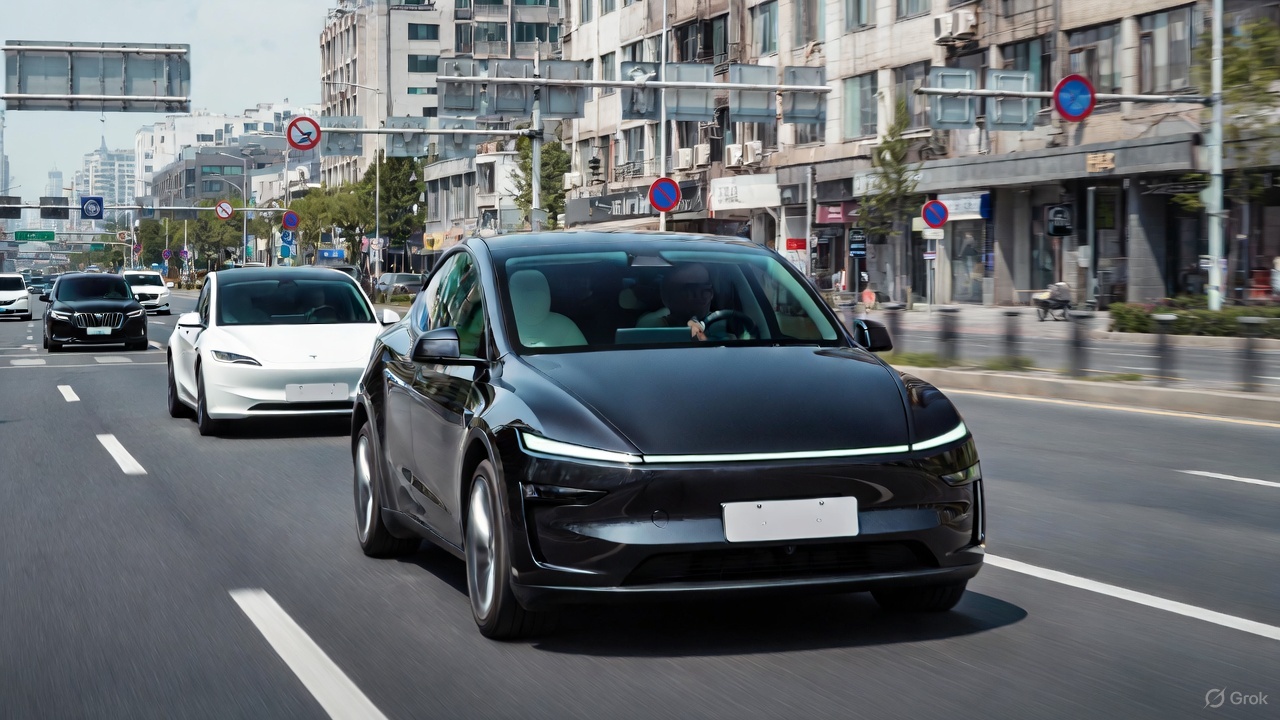
Tesla’s Model 3 and Model Y once again led the field in a new real-world energy-consumption test conducted by China’s Autohome, outperforming numerous rival electric vehicles in controlled conditions.
The results, which placed both Teslas in the top two spots, prompted Xiaomi CEO Lei Jun to acknowledge Tesla’s efficiency advantage while noting that his company’s vehicles will continue refining its own models to close the gap.
Tesla secures top efficiency results
Autohome’s evaluation placed all vehicles under identical conditions, such as a full 375-kg load, cabin temperature fixed at 24°C on automatic climate control, and a steady cruising speed of 120 km/h. In this environment, the Tesla Model 3 posted 20.8 kWh/100 km while the Model Y followed closely at 21.8 kWh/100 km, as noted in a Sina News report.
These figures positioned Tesla’s vehicles firmly at the top of the ranking and highlighted their continued leadership in long-range efficiency. The test also highlighted how drivetrain optimization, software management, and aerodynamic profiles remain key differentiators in high-speed, cold-weather scenarios where many electric cars struggle to maintain low consumption.
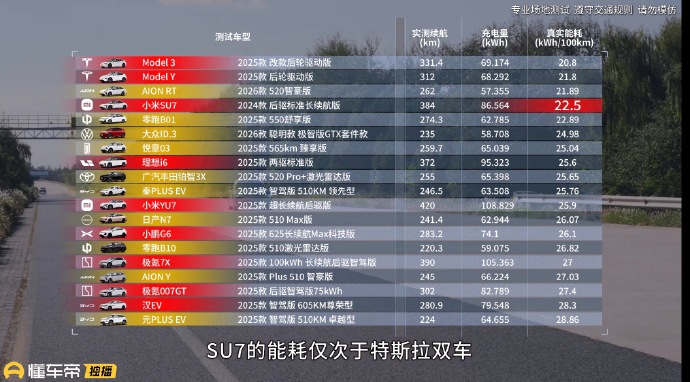
Xiaomi’s Lei Jun pledges to continue learning from Tesla
Following the results, Xiaomi CEO Lei Jun noted that the Xiaomi SU7 actually performed well overall but naturally consumed more energy due to its larger C-segment footprint and higher specification. He reiterated that factors such as size and weight contributed to the difference in real-world consumption compared to Tesla. Still, the executive noted that Xiaomi will continue to learn from the veteran EV maker.
“The Xiaomi SU7’s energy consumption performance is also very good; you can take a closer look. The fact that its test results are weaker than Tesla’s is partly due to objective reasons: the Xiaomi SU7 is a C-segment car, larger and with higher specifications, making it heavier and naturally increasing energy consumption. Of course, we will continue to learn from Tesla and further optimize its energy consumption performance!” Lei Jun wrote in a post on Weibo.
Lei Jun has repeatedly described Tesla as the global benchmark for EV efficiency, previously stating that Xiaomi may require three to five years to match its leadership. He has also been very supportive of FSD, even testing the system in the United States.
Elon Musk
Elon Musk reveals what will make Optimus’ ridiculous production targets feasible
Musk recent post suggests that Tesla has a plan to attain Optimus’ production goals.
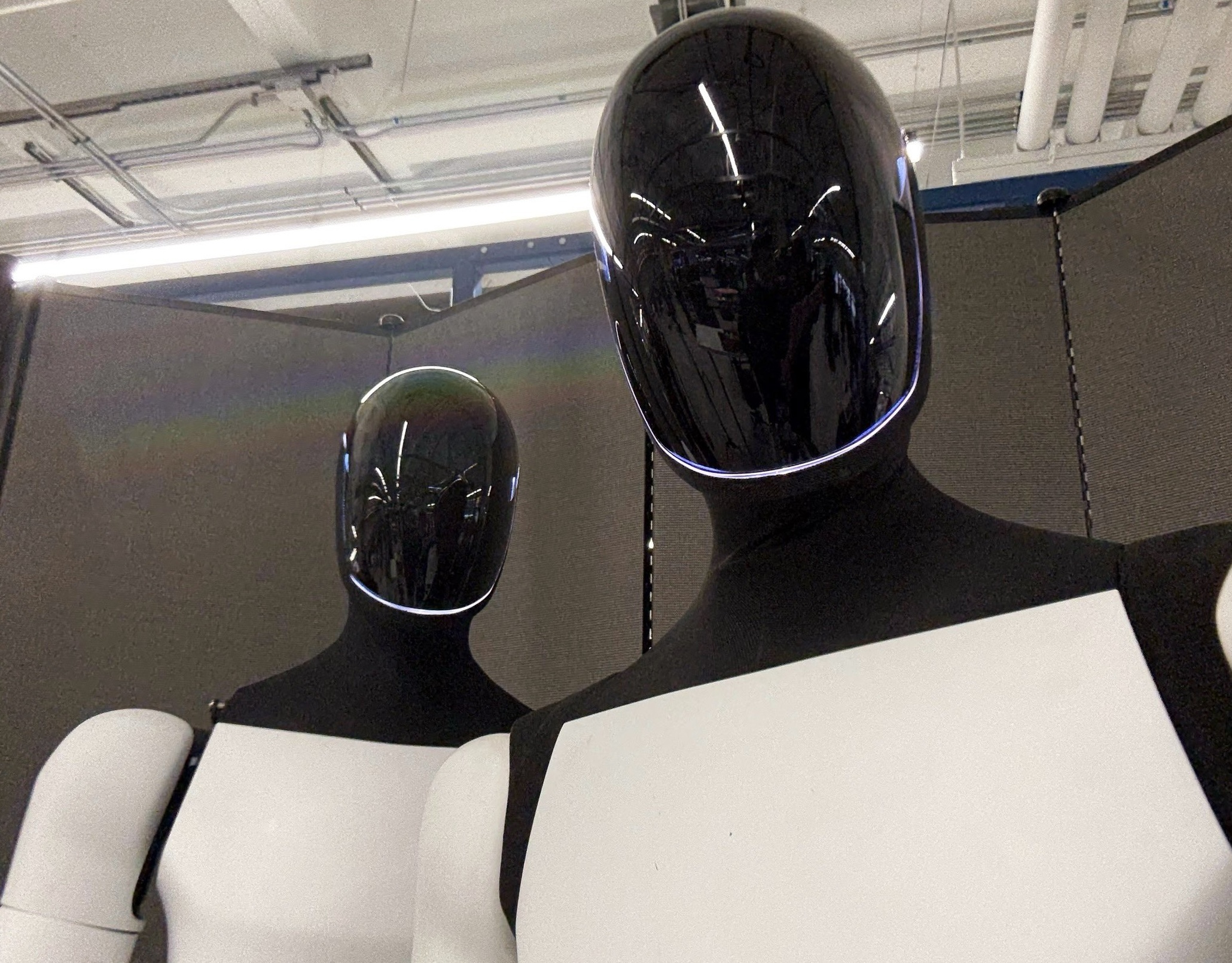
Elon Musk subtly teased Tesla’s strategy to achieve Optimus’ insane production volume targets. The CEO has shared his predictions about Optimus’ volume, and they are so ambitious that one would mistake them for science fiction.
Musk’s recent post on X, however, suggests that Tesla has a plan to attain Optimus’ production goals.
The highest volume product
Elon Musk has been pretty clear about the idea of Optimus being Tesla’s highest-volume product. During the Tesla 2025 Annual Shareholder Meeting, Musk stated that the humanoid robot will see “the fastest production ramp of any product of any large complex manufactured product ever,” starting with a one-million-per-year line at the Fremont Factory.
Following this, Musk stated that Giga Texas will receive a 10 million-per-year unit Optimus line. But even at this level, the Optimus ramp is just beginning, as the production of the humanoid robot will only accelerate from there. At some point, the CEO stated that a Mars location could even have a 100 million-unit-per-year production line, resulting in up to a billion Optimus robots being produced per year.
Self-replication is key
During the weekend, Musk posted a short message that hinted at Tesla’s Optimus strategy. “Optimus will be the Von Neumann probe,” the CEO wrote in his post. This short comment suggests that Tesla will not be relying on traditional production systems to make Optimus. The company probably won’t even hire humans to produce the humanoid robot at one point. Instead, Optimus robots could simply produce other Optimus robots, allowing them to self-replicate.
The Von Neumann is a hypothetical self-replicating spacecraft proposed by the mathematician and physicist John von Neumann in the 1940s–1950s. The hypothetical machine in the concept would be able to travel to a new star system or location, land, mine, and extract raw materials from planets, asteroids, and moons as needed, use those materials to manufacture copies of itself, and launch the new copies toward other star systems.
If Optimus could pull off this ambitious target, the humanoid robot would indeed be the highest volume product ever created. It could, as Musk predicted, really change the world.









